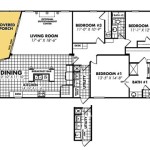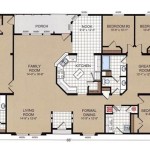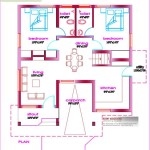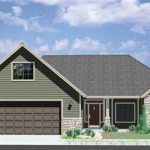Floor Plans For Tiny Homes On Wheels: Maximizing Space and Functionality
The surge in popularity of tiny homes on wheels reflects a growing interest in minimalist living, financial freedom, and environmental consciousness. A crucial aspect of designing a successful tiny home on wheels is the floor plan. A well-designed floor plan maximizes the limited space, ensures functionality, and caters to the specific needs and lifestyle of its occupants. Planning a tiny home's layout requires meticulous consideration of space utilization, storage solutions, and ergonomic principles.
Successfully creating a comfortable and functional tiny home on wheels necessitates a detailed understanding of the available dimensions. Standard trailer sizes for tiny homes range from 16 to 32 feet in length, 8 to 8.5 feet in width, and a maximum height of 13.5 feet (including the trailer). Understanding these dimensions is vital before committing to any floor plan design. These constraints influence the placement of major appliances, living areas, sleeping arrangements, and storage compartments.
Key Considerations for Tiny Home Floor Plans
Several factors influence the design of an effective tiny home floor plan. These considerations extend beyond aesthetics and delve into practical aspects of daily living. Maximizing usable space, incorporating adequate storage, ensuring proper ventilation, and meeting building codes are all essential elements that contribute to the overall functionality and comfort of the tiny home.
First, space maximization is paramount. Every square inch matters in a tiny home. This involves considering multi-functional furniture, vertical storage solutions, and clever use of nooks and crannies. Fold-down tables, convertible sofas, and lofted beds are common strategies for optimizing space. Utilizing built-in storage beneath seating areas and staircases can further enhance storage capacity without sacrificing living space.
Second, adequate storage is crucial for maintaining a clutter-free and organized living environment. A well-designed storage system can significantly impact the perceived size and comfort of the tiny home. Integrating storage into the floor plan from the outset is more effective than adding it as an afterthought. This involves considering the types of items that need to be stored and designing storage solutions accordingly. Custom-built cabinets, shelving units, and drawers can be tailored to fit specific needs and maximize the available space. Moreover, considering off-season storage options, such as external sheds or storage units, can alleviate storage pressure within the tiny home itself.
Third, ensuring proper ventilation is critical for maintaining healthy indoor air quality and preventing moisture buildup. Tiny homes, due to their compact size, are susceptible to humidity and condensation. Strategically placed windows and vents can promote airflow and minimize the risk of mold and mildew growth. Installing a range hood above the cooking area and a ventilation fan in the bathroom is essential for removing moisture and odors. Furthermore, selecting building materials that are breathable and moisture-resistant can contribute to improved indoor air quality.
Finally, compliance with building codes is a non-negotiable aspect of tiny home design. Building codes regulate various aspects of construction, including structural integrity, electrical wiring, plumbing, and fire safety. It is crucial to research and adhere to the relevant building codes in the intended location of the tiny home. Some jurisdictions may have specific regulations for tiny homes on wheels, while others may treat them as recreational vehicles (RVs). Consulting with a qualified building inspector or architect can help ensure that the tiny home complies with all applicable codes.
Popular Tiny Home Floor Plan Layouts
Several popular floor plan layouts cater to the diverse needs and preferences of tiny home dwellers. These layouts differ in their arrangement of living areas, sleeping quarters, and storage spaces. Understanding the advantages and disadvantages of each layout can help aspiring tiny homeowners choose the floor plan that best suits their lifestyle.
One common layout features a loft bedroom situated above the living area or kitchen. This design maximizes the use of vertical space, allowing for a more spacious living area on the ground floor. The loft bedroom is typically accessed via a ladder or staircase. This layout is ideal for individuals or couples who are comfortable with climbing and prefer a separate sleeping area. However, the loft bedroom may have limited headroom and accessibility for individuals with mobility issues.
A variation of the loft layout incorporates a ground-floor bedroom. This design eliminates the need for climbing and provides a more accessible sleeping area. The ground-floor bedroom may be separated from the living area by a partition or curtain. This layout is suitable for individuals with mobility limitations or those who prefer a more traditional sleeping arrangement. However, the ground-floor bedroom may reduce the size of the living area or kitchen.
Another popular layout features an open-concept design, where the living area, kitchen, and sleeping area are combined into a single, multi-functional space. This design maximizes the sense of spaciousness and allows for greater flexibility in furniture arrangement. Fold-down beds, convertible sofas, and movable partitions can be used to create distinct zones within the open-concept space. This layout is suitable for minimalist individuals who prioritize flexibility and adaptability. However, the open-concept design may lack privacy and may not be suitable for individuals who require separate living and sleeping areas.
Some tiny home designs incorporate a "gooseneck" trailer, which extends over the bed of a pickup truck. This design provides additional living space and allows for a more spacious kitchen, bathroom, or bedroom. The gooseneck design is particularly suitable for individuals who plan to live in their tiny home full-time and require more storage and living space. However, the gooseneck trailer may be more difficult to maneuver and park than a standard trailer.
Essential Elements of a Tiny Home Floor Plan
Regardless of the specific layout, several essential elements should be incorporated into every tiny home floor plan. These elements contribute to the overall functionality, comfort, and livability of the tiny home.
The kitchen area should be designed to be functional and efficient, despite its limited size. Compact appliances, such as a two-burner cooktop, a small refrigerator, and a microwave oven, are commonly used in tiny home kitchens. Ample countertop space is essential for food preparation. Consider incorporating a fold-down countertop or a rolling kitchen island to maximize workspace. Strategic placement of cabinets and drawers can provide adequate storage for cookware, utensils, and food items. A well-ventilated kitchen is also essential for removing cooking odors and preventing moisture buildup.
The bathroom area should be designed to be both functional and comfortable. A compact shower or wet bath is a common feature in tiny home bathrooms. A composting toilet or a low-flush toilet can help conserve water. A small vanity with a sink and storage space is essential for personal hygiene items. Proper ventilation is crucial for removing moisture and odors. Consider incorporating a skylight or a window to provide natural light and ventilation.
The living area should be designed to be a comfortable and inviting space for relaxation and socialization. A convertible sofa or a futon can provide seating and sleeping space. A small table can be used for dining or working. Consider incorporating a built-in bookshelf or a media center for entertainment. Adequate lighting is essential for creating a warm and inviting atmosphere. Layered lighting, including ambient, task, and accent lighting, can enhance the functionality and aesthetics of the living area.
Considerations for accessibility are paramount. If the tiny home is intended for individuals with mobility limitations, it is crucial to incorporate features that promote accessibility. A ramp or lift can provide access to the tiny home. Wider doorways and hallways can accommodate wheelchairs or walkers. Grab bars in the bathroom can provide support and stability. Lower countertops and cabinets can improve accessibility for individuals who use wheelchairs. Designing a tiny home that is accessible to individuals of all abilities can ensure that it remains a comfortable and functional living space for years to come.
In conclusion, the floor plan is the foundation of a successful tiny home on wheels. By carefully considering space utilization, storage solutions, ventilation, building codes, and lifestyle preferences, aspiring tiny homeowners can design a functional, comfortable, and aesthetically pleasing living space that meets their specific needs.

Tiny House Floor Plans 32 Home On Wheels Design

Escape Traveler A Tiny House On Wheels That Comfortably Sleeps 6 Floor Plans Trailer

224 Sq Ft Tiny House On Wheels By Living Homes Small Diy

How To Pick The Best Tiny House On Wheels Floor Plan Wayward Home

Tiny House Plans The Project

Free Tumbleweed Diy Tiny House Plans Houses

27 Adorable Free Tiny House Floor Plans Craft Mart

Design A Tiny House On Wheels Tips And Tools For Diyers

Tiny House Floor Plans 32 Long Home On Wheels Design

Tiny House Plans On Wheels Main Floor Bedroom Office Lofts








